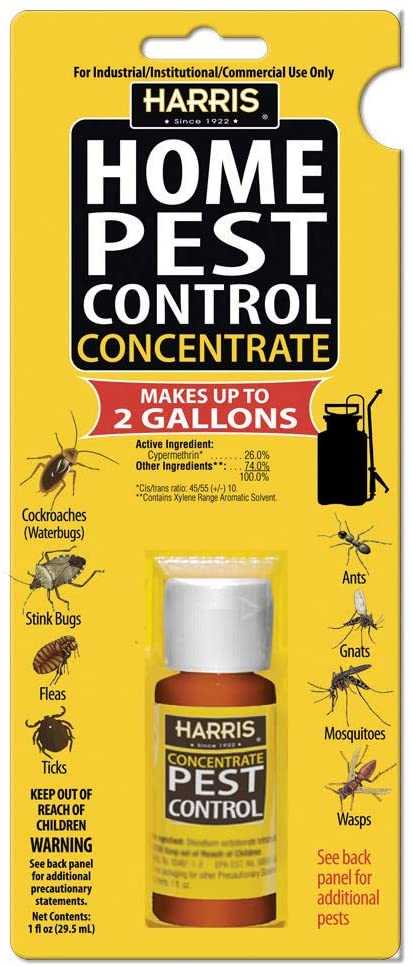Bed Bug Treatment Break Down: Comparing Chemical Vs. Non-Chemical Solutions
In the world of pest control, particularly when dealing with the relentless issue of bed insects, the selection in between chemical and non-chemical treatment remedies can be an essential one. Both strategies use unique advantages and downsides, influencing factors such as effectiveness, safety and security considerations, and total expense. By checking out the nuanced details of each approach, a more clear understanding of which course to go after in dealing with a bed pest infestation can be achieved.
Efficiency of Chemical Treatments
Chemical treatments for bed insect invasions have actually been extensively recognized for their potent and fast effectiveness in eliminating these parasites. When taking into consideration the effectiveness of chemical therapies, it is critical to recognize that they can provide a quick and extensive option to a bed insect issue. Expert pest control experts usually rely on insecticides to target bed insects at various stages of their life process, consisting of fairies, adults, and eggs. These chemicals typically work by interfering with the bed bugs' worried system, leading to paralysis and ultimate death.
Additionally, chemical treatments have the benefit of providing recurring impacts, implying that they can continue to get rid of bed bugs also after the initial application. This recurring activity is specifically helpful in combating any type of possible re-infestations. Furthermore, the fast action of chemical therapies can bring alleviation to people dealing with severe bed insect infestations, enabling them to regain control of their space swiftly.
Safety And Security Interest In Chemical Solutions
One crucial aspect that requires mindful factor to consider when making use of chemical options for bed bug therapy is making certain the safety and security of passengers and the environment. Direct exposure to specific chemicals used in bed insect treatments can lead to respiratory concerns, skin inflammation, or other unfavorable reactions, especially in individuals with pre-existing conditions or level of sensitivities.
Additionally, the ecological influence of chemical options is an additional substantial consideration. Some chemicals used in bed pest therapies might be dangerous to advantageous insects, wild animals, and ecosystems if they leach into the dirt or water supply. It is vital to utilize chemical treatments sensibly, adhering to security standards, and taking into consideration much less toxic alternatives to alleviate these risks and ensure the safe and effective management of bed bug invasions.
Benefits of Non-Chemical Strategies
Considering the possible safety and security concerns and environmental effect linked with chemical remedies for bed bug therapy, discovering non-chemical strategies provides an appealing choice with several unique advantages. Non-chemical methods supply a safer choice for households, especially those with children, individuals, or family pets conscious extreme chemicals. These techniques remove the dangers of exposure to harmful materials, minimizing the potential for negative wellness results. In addition, non-chemical therapies are eco-friendly, as they do not contribute to air or water contamination, making them a sustainable choice for pest control.
In addition, non-chemical solutions can be effective in targeting bed insects, including hard-to-reach areas where chemical treatments may not permeate. Approaches such as warm treatment, vacuuming, heavy steam cleansing, and mattress encasements supply thorough removal without making use of harmful chemicals. Additionally, non-chemical methods can be much less disruptive, calling for very little preparation and allowing for quicker reentry into treated locations. Generally, choosing non-chemical bed pest therapy methods not just prioritizes security and environmental management but additionally makes certain extensive and effective pest control.
Limitations of Non-Chemical Treatments

Additionally, non-chemical therapies usually need multiple applications to achieve successful obliteration. This can be lengthy and may not constantly assure complete removal of all bed insects and their eggs, especially in hard-to-reach or surprise locations.
In addition, the success of non-chemical have a peek at these guys treatments greatly counts on correct implementation and thoroughness, which can be testing for individuals without expert experience. Poor application of non-chemical approaches might result in incomplete eradication, resulting in persistent invasions and the requirement for additional therapies.
For that reason, while non-chemical therapies have their benefits, it is vital to acknowledge these constraints and consider them when identifying the most effective approach for handling bed insect problems.
Cost Comparison: Chemical Vs. Non-Chemical Options
Offered the constraints connected with non-chemical treatments, an important aspect to assess in the context of bed pest administration is the cost contrast in between chemical and non-chemical choices. In comparison, non-chemical therapies like heat therapy or vapor can be extra costly, with costs varying from $1,000 to $6,000 for an entire home. While the initial cost of chemical treatments might appear reduced, numerous treatments may be called for to fully get rid of the infestation, potentially raising the overall expense.
Conclusion

Taking into consideration the possible safety and security problems and environmental effect connected with chemical remedies for bed bug treatment, discovering non-chemical approaches offers an appealing option with numerous distinct advantages.Given the limitations linked with non-chemical therapies, a crucial aspect to examine in the context of bed pest management is the cost comparison between chemical and non-chemical alternatives. In comparison, non-chemical treatments like american pest control warm therapy or vapor can be more expensive, with expenses varying from $1,000 to $6,000 for a whole home. While the first cost of chemical treatments may seem reduced, numerous therapies may be required to completely get rid of the invasion, possibly boosting the overall expense.In final thought, when contrasting chemical and non-chemical bed insect therapy options, it is essential to consider effectiveness, safety, advantages, constraints, and price.
Comments on “Experienced A1 Exterminators Charlotte NC - Fast and Reliable Solutions”